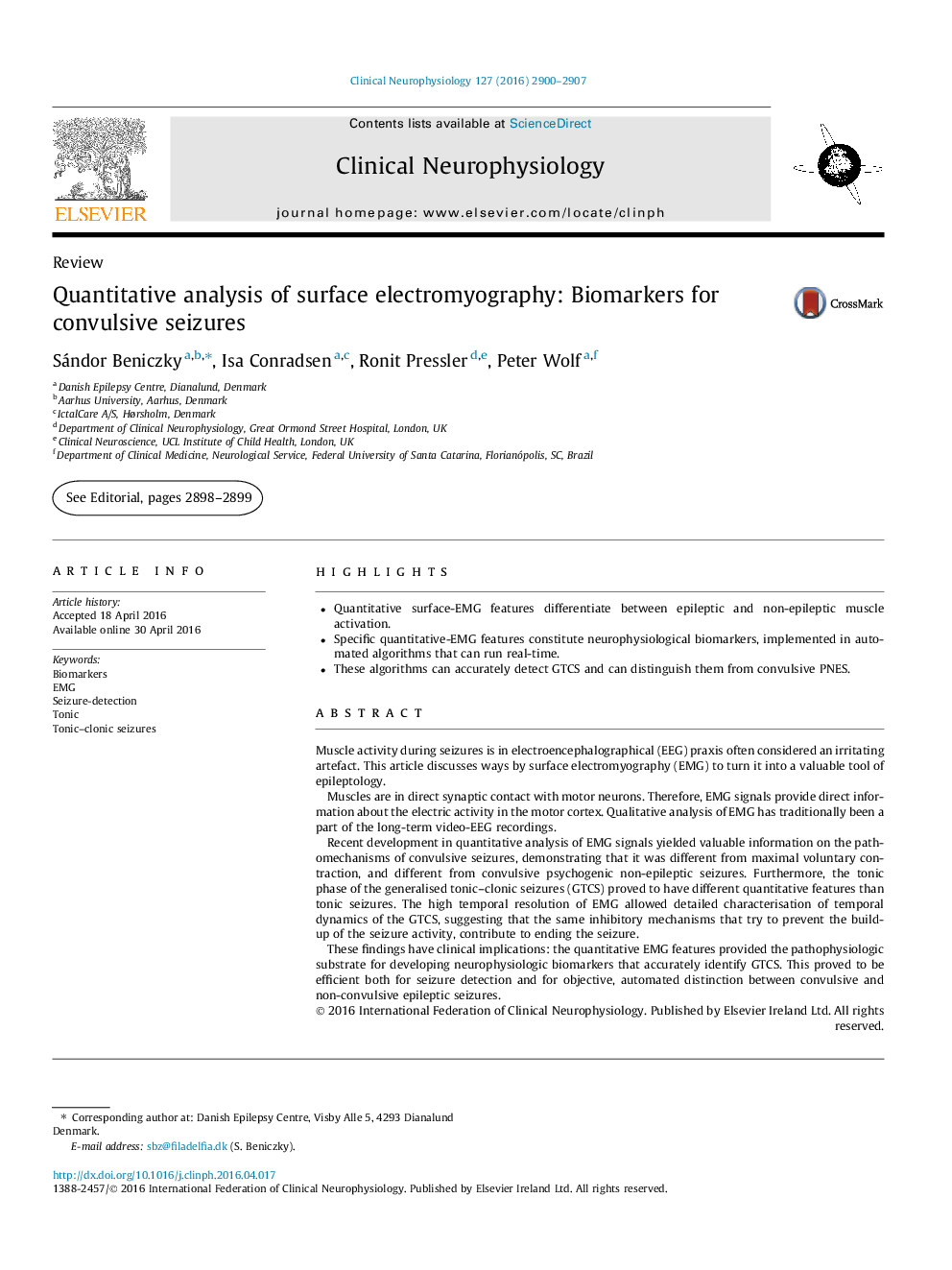| Article ID | Journal | Published Year | Pages | File Type |
|---|---|---|---|---|
| 3042652 | Clinical Neurophysiology | 2016 | 8 Pages |
•Quantitative surface-EMG features differentiate between epileptic and non-epileptic muscle activation.•Specific quantitative-EMG features constitute neurophysiological biomarkers, implemented in automated algorithms that can run real-time.•These algorithms can accurately detect GTCS and can distinguish them from convulsive PNES.
Muscle activity during seizures is in electroencephalographical (EEG) praxis often considered an irritating artefact. This article discusses ways by surface electromyography (EMG) to turn it into a valuable tool of epileptology.Muscles are in direct synaptic contact with motor neurons. Therefore, EMG signals provide direct information about the electric activity in the motor cortex. Qualitative analysis of EMG has traditionally been a part of the long-term video-EEG recordings.Recent development in quantitative analysis of EMG signals yielded valuable information on the pathomechanisms of convulsive seizures, demonstrating that it was different from maximal voluntary contraction, and different from convulsive psychogenic non-epileptic seizures. Furthermore, the tonic phase of the generalised tonic–clonic seizures (GTCS) proved to have different quantitative features than tonic seizures. The high temporal resolution of EMG allowed detailed characterisation of temporal dynamics of the GTCS, suggesting that the same inhibitory mechanisms that try to prevent the build-up of the seizure activity, contribute to ending the seizure.These findings have clinical implications: the quantitative EMG features provided the pathophysiologic substrate for developing neurophysiologic biomarkers that accurately identify GTCS. This proved to be efficient both for seizure detection and for objective, automated distinction between convulsive and non-convulsive epileptic seizures.
